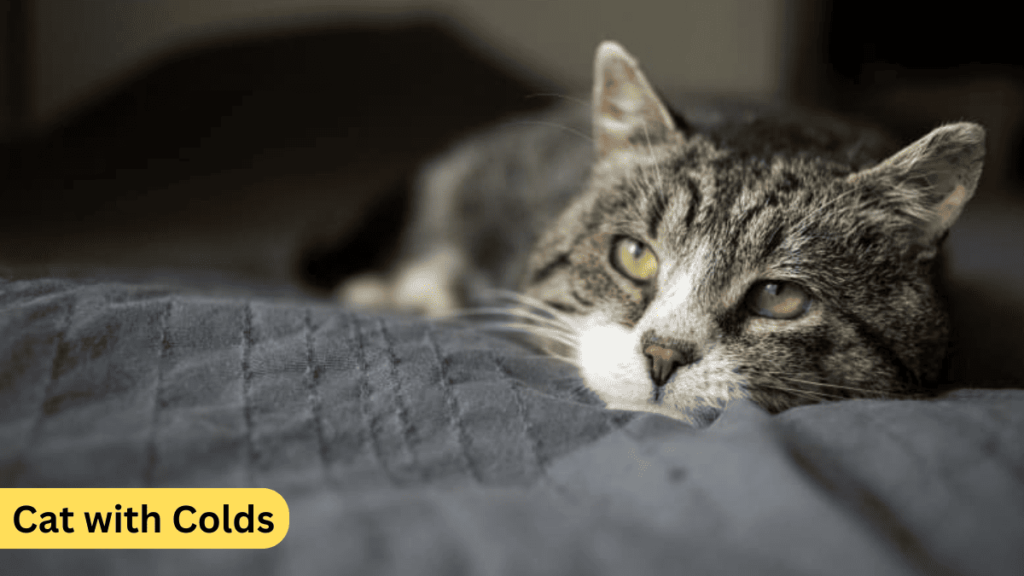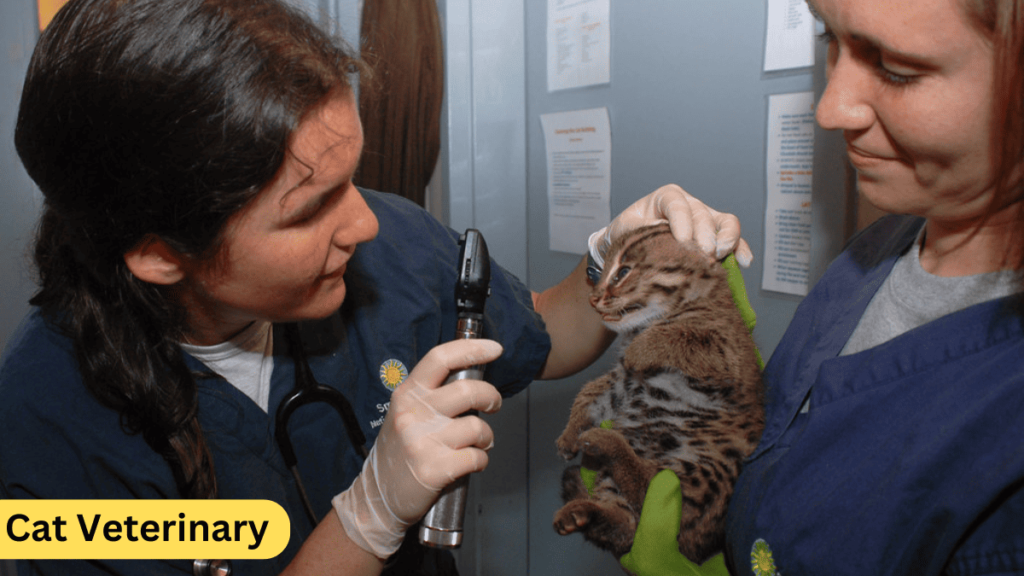
Cats, like humans, can catch colds, which manifest as upper respiratory infections (URIs). These infections can make your feline friend feel lethargic, stuffy, and generally unwell. As a loving cat parent, you may be wondering how to help your cat recover at home without rushing to the vet for every sneeze. In this comprehensive guide, we’ll walk through Cats with Colds Home Treatments: A 2024 Guide.
Table of Contents
What is a Cat Cold?
A “cat cold” refers to a set of symptoms similar to a human cold, but it’s caused by different viruses or bacteria. The most common culprits are:
- Feline Herpesvirus (FHV-1): This virus is highly contagious and stays dormant in a cat’s system, often flaring up when the cat is stressed.
- Feline Calicivirus (FCV): Another common cause of respiratory infections in cats, often leading to ulcers in the mouth as well as respiratory symptoms.
Though cat colds are usually not serious, they can make your pet uncomfortable. In more severe cases, a secondary bacterial infection or pneumonia may develop, requiring veterinary intervention.
Symptoms of a Cat Cold

Knowing the symptoms of a cat cold can help you identify the issue early and start providing relief. Typical symptoms include:
- Sneezing
- Coughing
- Runny or stuffy nose
- Eye discharge (clear or colored)
- Fatigue or lethargy
- Fever
- Reduced appetite
- Open-mouth breathing due to congestion
- Ulcers in the mouth or corneal ulcers
If your cat has any of these symptoms for more than 7-10 days, or if the symptoms worsen, it’s best to consult your veterinarian.
Best Home Treatments for Cats with Colds
When treating your cat at home, the goal is to make them as comfortable as possible while supporting their immune system. Here are some effective home treatments for cats with colds:
1. Use a Humidifier or Vaporizer
One of the best ways to ease your cat’s breathing is by increasing the moisture in the air. A humidifier or vaporizer can help relieve nasal congestion and soothe the respiratory tract. Run it in the room where your cat spends most of its time, especially in winter months when the air tends to be dry.
2. Steam Therapy
Another effective way to clear your cat’s nasal passages is steam therapy. Place your cat in the bathroom while you take a hot shower, allowing the steam to open their airways. Stay with your cat for about 10-15 minutes, and repeat twice a day for optimal relief.
3. Clear Nasal and Eye Discharge
Your cat’s eyes and nose may produce a discharge during a cold. Use a soft, damp cloth to gently wipe away any mucus or crust around their eyes and nose. This will help them breathe more easily and feel more comfortable.
4. Encourage Hydration
Cats with colds can lose their sense of smell, making them less interested in eating and drinking. Make sure your cat stays hydrated by offering fresh water frequently. You can also try giving them water-rich foods like tuna water (unsalted) or chicken broth. Using a pet fountain can encourage drinking, as cats often prefer running water.
5. Boost Appetite with Smelly Foods
Since congestion may dull your cat’s sense of smell, entice them to eat with aromatic foods. Wet food, canned tuna, or sardines are great options to help stimulate their appetite. Warming the food slightly can also enhance the scent, making it more appealing to your cat.
6. Reduce Stress Levels
Stress can weaken your cat’s immune system, prolonging the illness. Create a calm, quiet environment for your cat to rest and recover. Ensure they have a cozy space with easy access to their litter box, food, and water. You can also use pheromone diffusers like Feliway to create a calming atmosphere.
7. Provide Immune-Boosting Supplements
Consult your vet about giving your cat supplements that can support their immune system. Probiotics, lysine, and Vitamin C are commonly recommended to help cats fight off infections. However, always check with your vet before administering any supplements.
8. Keep Your Cat Warm
A warm environment can help speed up recovery. Ensure your cat has access to warm blankets or a cozy bed. You can also place a heating pad on the lowest setting under a blanket to create a warm space for them to rest, but ensure the heat is not too high.
When to See a Vet

While most cat colds resolve on their own within a week, certain symptoms may require medical intervention. Call your veterinarian if:
- Your cat has yellow or green nasal discharge (indicating a bacterial infection)
- They have difficulty breathing or persistent coughing
- They refuse to eat or drink for more than 24 hours
- Their symptoms last longer than 10 days
- They develop a fever over 103°F (39.4°C)
In these cases, your vet may prescribe antibiotics or antiviral medications. Cats with severe symptoms might require hospitalization for fluid therapy or oxygen support.
Cat Cold Symptoms vs. When to Seek Veterinary Help
| Symptoms | Home Treatment | When to See a Vet |
|---|---|---|
| Sneezing, mild nasal discharge | Humidifier, steam therapy, wipe discharge | Discharge turns yellow or green |
| Reduced appetite | Warm, smelly foods like tuna or wet cat food | Refusal to eat or drink for 24 hours |
| Coughing | Steam therapy, keep your cat warm | Persistent coughing or wheezing |
| Lethargy | Quiet, stress-free environment | Lethargy with fever above 103°F |
| Clear eye discharge | Gently wipe eyes with damp cloth | Eye discharge becomes colored or severe |
| Mild fever (<103°F) | Provide hydration and rest | Fever lasts more than 48 hours or worsens |
Preventing Future Cat Colds
Prevention is always better than cure. While you can’t always shield your cat from viruses, there are ways to reduce the likelihood of them catching colds:
- Vaccinations: Ensure your cat is up to date on core vaccinations like feline herpesvirus and calicivirus. Vaccinations won’t prevent infections entirely, but they can reduce the severity of symptoms.
- Limit Contact with Sick Cats: Keep your cat away from other cats that show symptoms of a cold. Viruses spread through direct contact and shared surfaces like bedding, food bowls, and litter boxes.
- Maintain a Healthy Diet: A balanced diet rich in nutrients will keep your cat’s immune system strong. Choose high-quality cat food and offer supplements if recommended by your vet.
- Regular Vet Checkups: Routine checkups will help catch any underlying health issues before they become severe, ensuring your cat stays in optimal health.
Read More:
Cat Hot Spot Treatment: A 2024 Guide
FAQs on Cats with Colds Home Treatments
What is the best home treatment for a cat with a cold?
The best home treatments include using a humidifier, providing steam therapy, ensuring hydration, boosting appetite with smelly foods, and reducing stress. These treatments can ease congestion and help your cat recover comfortably.
Can I give my cat cold medicine?
Never give your cat human cold medicine or over-the-counter treatments without consulting a veterinarian. Some ingredients in human medications can be toxic to cats.
How long does a cat cold last?
Most cat colds last 7-10 days. If symptoms persist beyond this period or worsen, consult your veterinarian.
Conclusion
Cats with colds can be treated effectively at home with the right care and attention. By using humidifiers, providing steam therapy, offering enticing foods, and keeping stress levels low, you can help your cat recover quickly. However, always monitor their symptoms closely and consult a vet if needed. With proper care, your furry friend will be back to their playful self in no time!
By following these home treatments and preventive measures, you can ensure that your cat stays healthy and resilient, even when exposed to common feline viruses.
